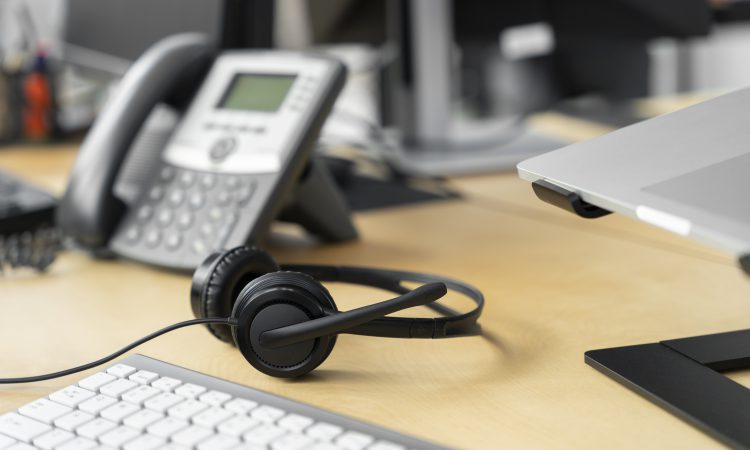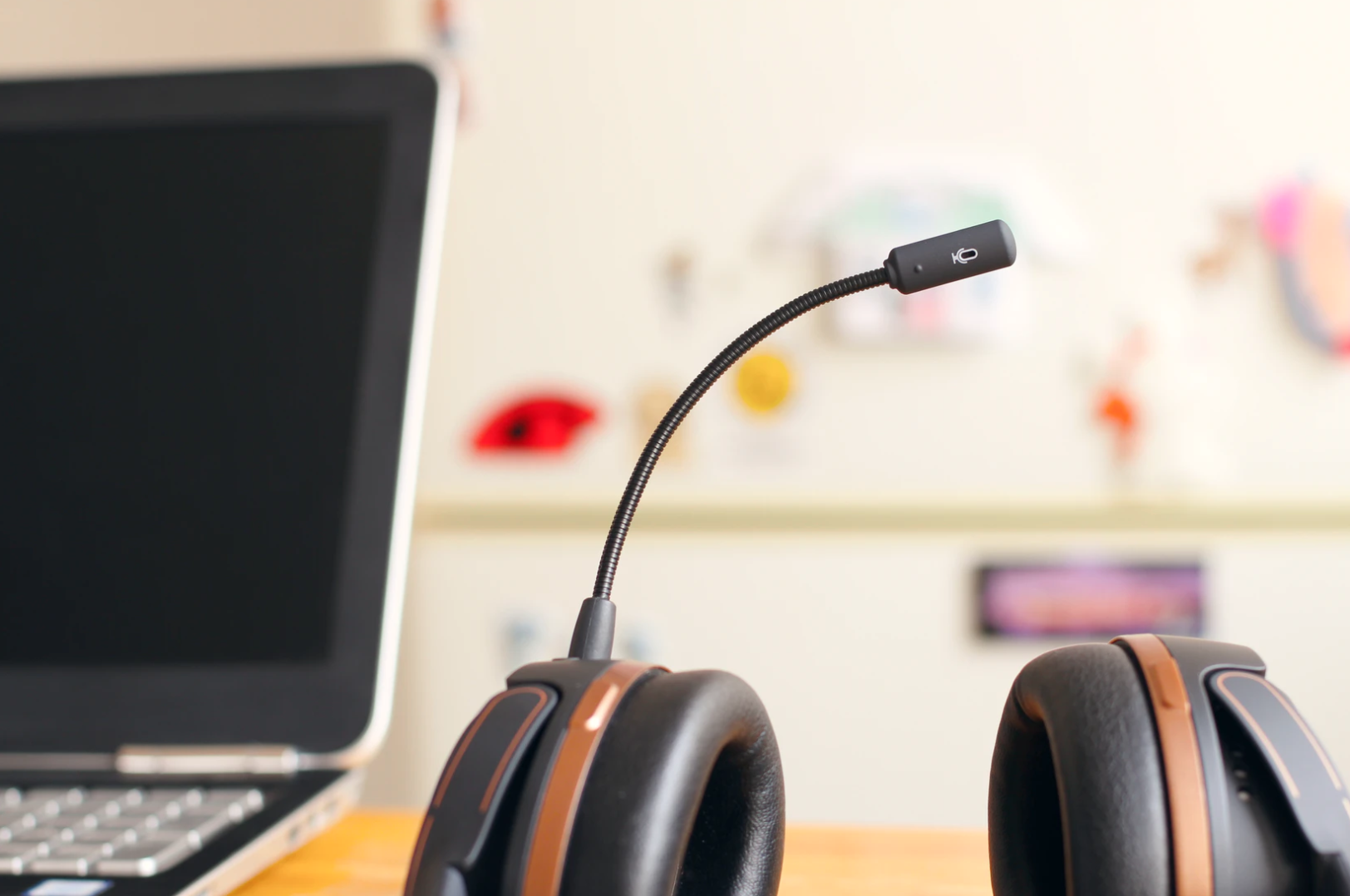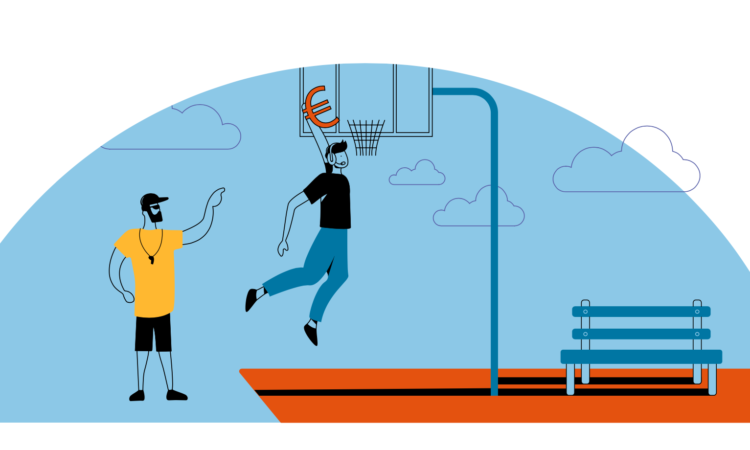
The Average Handling Time, or AHT, is a critical metric for call centers and customer service organizations, as it measures the average duration of customer calls. This metric is important because it provides valuable information about the efficiency and effectiveness of customer service agents. The shorter the AHT, the better the customer experience, as this means that agents are resolving issues quickly and efficiently.
Next, we’ll delve into this metric and how it can affect the performance of your call center if you have a B2B business.
What is the AHT?
AHT is a metric that measures the average duration of a customer’s contact on a call. AHT includes not only the time an agent spends talking to a customer, but also any time spent retaining them, any delays, or any follow-up actions needed to meet the customer’s needs.
A shorter AHT usually means that agents are resolving issues quickly and efficiently, leading to higher customer satisfaction and higher call center productivity. On the other hand, a longer AHT can indicate training issues or deficient software tools.
By analyzing AHT, call center managers can identify trends and patterns, take steps to improve agent performance and customer satisfaction. However, reducing AHT is not always the best solution, as it’s important to balance a short AHT with quality customer care. Therefore, it’s crucial to monitor additional metrics like customer satisfaction (with KPIs such as NPS or CSAT) and FCR to ensure quality service.
To calculate the average handling time in a call center, it is necessary to measure the total conversation time, the total hold time, and the time for follow-up or post-call tasks.
The formula to calculate the AHT is as follows:
[Total conversation time + Total hold time + Follow-up time] / Total number of calls
For example, if a call center agent handles 15 calls in a day, with 40 minutes talking, 2 minutes on hold, and 3 minutes completing post-call tasks, the AHT would be:
(Total conversation time + Total hold time + Follow-up time) / Total number of calls = (40 + 2 + 3) / 15 = 3 minutes
The formula to calculate the AHT can vary slightly depending on the medium of communication being evaluated. To calculate the AHT of a telephone channel, you should add up the total conversation time, the total hold time, and the follow-up time, and then divide by the total number of calls. For chat, you should add the total amount of chat time and follow-up time, and then divide that number by the total number of chats. For web and email tickets, you should add up the total amount of time dedicated to each case and divide it by the total number of cases.
Why is it important to measure AHT?
It is important to evaluate AHT at key times, such as when updating systems or processes, automating workflows, and during regular reviews to identify tasks that take a long time for representatives. In this way, bottlenecks in the process can be identified and eliminated, and the efficiency of the organization improved.
Measuring average handling time allows companies to identify inefficient areas in their workflow and develop effective strategies to improve their performance. Here are some benefits of an optimized AHT for a call or contact center support team:
Reduces operating costs
Shortening the time of each call can have a significant impact on cost reduction. By decreasing inefficiencies and wasted time in an organization, overall costs, such as labor and overtime, can be reduced.
Setting the right AHT helps to eliminate obstacles in the workflow, reduce wait times and transfers, and improve overall operational performance, allowing representatives to handle more calls and increase efficiency in customer service.
Improves customer experience
When the average handling time is optimized, agents have a better understanding of how to handle customer calls effectively and efficiently. This allows customers to resolve their issues quickly, without having to wait for a long time, leading to higher customer satisfaction and proactive customer service.
Increases agent productivity
Through the reduction of AHT, team productivity can be increased, and representatives can handle more cases in their daily workflow. Additionally, AHT can be used as an effective KPI to establish benchmarks or new customer service goals.
What is a good average AHT?
AHT can vary depending on the industry standard and from one department to another in the same organization, as many factors play a role in its calculation. The Erlang Calculator from Call Center Magazine offers a reference number of six minutes and 10 seconds for all industries. However, the number is difficult to calculate and post-call work times are not included in reports.
| Industry | AHT |
| Consumer/Professional Services | 3 minutes, 36 seconds |
| Financial Services | 4 minutes, 5 seconds |
| Government and Public Sector | 4 minutes, 12 seconds |
| Health | 3 minutes, 28 seconds |
| Hospitality | 3 minutes, 11 seconds |
| Manufacturing | 4 minutes, 13 seconds |
| Media and Communication | 3 minutes, 30 seconds |
| Retail, E-commerce and Consumer Goods | 3 minutes, 29 seconds |
| Telecommunications | 2 minutes, 36 seconds |
| Transportation and Logistics | 4 minutes, 8 seconds |
| Others | 1 minute, 21 seconds |
Ways to optimize AHT
Support managers can employ different methods to reduce AHT in a call center. Here are some steps they can follow:
Improve Agent Training
It’s crucial to provide agents with necessary training in customer relationship management tools, live chat software, company policies, among other relevant aspects. Scripts and role-playing with recordings of the conversations can improve customer interaction and solve problems effectively, providing a positive customer experience and improving the efficiency of the customer service team.
Create an Omnichannel Customer Service
To reduce AHT, it’s crucial to ensure an instant connection between the customer and the right agent. An omnichannel contact center facilitates communication at all touchpoints, avoiding unnecessary transfers and reducing the average duration of calls. Clear routing processes are key to improving both AHT and the customer experience. A well-designed IVR routing system or phone tree allows customers to select who they need to talk to, connecting them with the right agent from the first call.
Build Internal Communication Channels
The use of multiple email threads and call transfers between call center representatives can increase AHT. To address this issue, internal agent chat interaction can speed up communication and reduce customer wait time, improving average handling time. Having a system that facilitates quick and effective internal communication results in higher customer satisfaction.
Have a Knowledge Base
Storing information in one place and making it easily accessible for agents allows for quickly finding solutions to specific problems, reducing average handling time and improving long-term efficiency. An internal knowledge base with self-service content, like FAQs and visual guides, helps agents provide accurate and timely answers to customers.
Record Agent Calls
A good practice to improve efficiency in the call center is to record calls to identify inefficiencies and areas for improvement. Recordings are also useful for agent training, identifying top performers, and improving customer satisfaction. Analyzing the recordings helps to understand the customer experience in terms of wait time and conversation.
Evaluate Agent Performance
Monitoring and supervision are key to ongoing training and agent performance in a call center, even for more experienced ones. It’s important to evaluate key metrics like average wait time, average talk time, dropped calls, rejected calls, and accepted transfers. These metrics should be the main focus to ensure maximum productivity and profitability of the call center. Understanding the context surrounding these metrics is crucial to gain a complete view of the contact center’s strengths and weaknesses and how they affect AHT.
Don’t Sacrifice Quality for Speed
To reduce AHT in a call center, it’s important to avoid lengthy greetings and sign-offs, striking a balance between being friendly and respecting the customer’s time. However, it’s crucial to allow support to be provided effectively rather than rushing to close cases, avoiding errors and waste of time. Considering AHT alongside other metrics and constant tracking allows for significant improvements in call center efficiency and business outcomes.
Adopt Customer Service Tools
There are tools available, like the aforementioned Erlang Calculator, which allow for quickly calculating AHT with additional variables. Furthermore, implementing advanced technological tools, like virtual assistants, chatbots, or ticket automation tools, improves efficiency and customer experience in customer service, allowing for quick and effective problem resolution, which in turn improves average handling time.
On the other hand, the use of sales software provides visual charts and dashboards for long-term analysis of KPIs, including AHT. Within this section, we have business intelligence tools like Upbe. Upbe has the potential to significantly improve average handling time (AHT) and overall performance of a B2B call center. Here’s how:
- Real-time Call Analysis: Upbe uses artificial intelligence to automatically listen to and analyze 100% of sales calls. This means that all the details of a conversation with a customer are collected and evaluated. This feature can help identify issues that lengthen AHT, such as long pauses, unnecessary conversations, or difficulties locating information.
- Objective Evaluation of Customer Experience: By evaluating each interaction objectively, Upbe can identify trends and patterns that could be negatively affecting call center efficiency.
- Detailed Insight on Sellers’ Performance: Upbe provides a clear view of each seller’s individual performance. This can help managers identify areas for improvement for each team member, and work on them.
- Customizable to Your Company’s Needs: As Upbe is a platform that adapts to your specific company’s needs, it can help solve problems that are unique to your call center. This can lead to significant improvements in overall performance and AHT.
Ask for a demo and see for yourself!





1 Comment
Comments are closed.